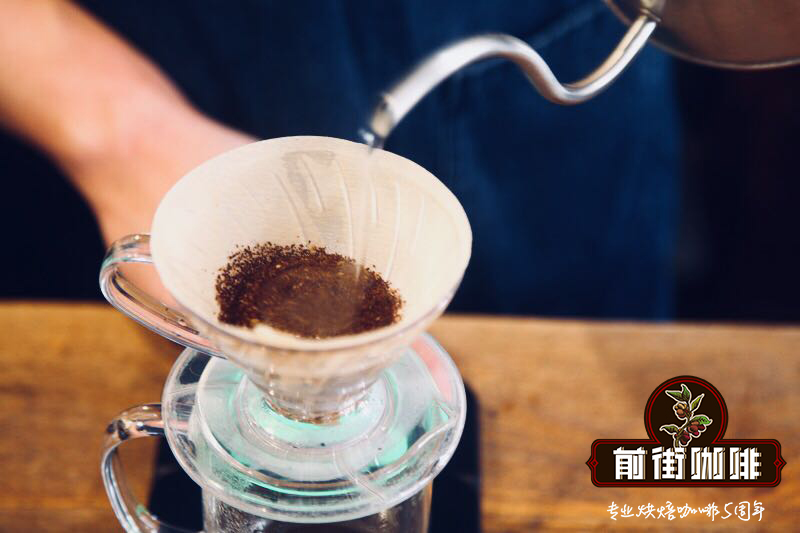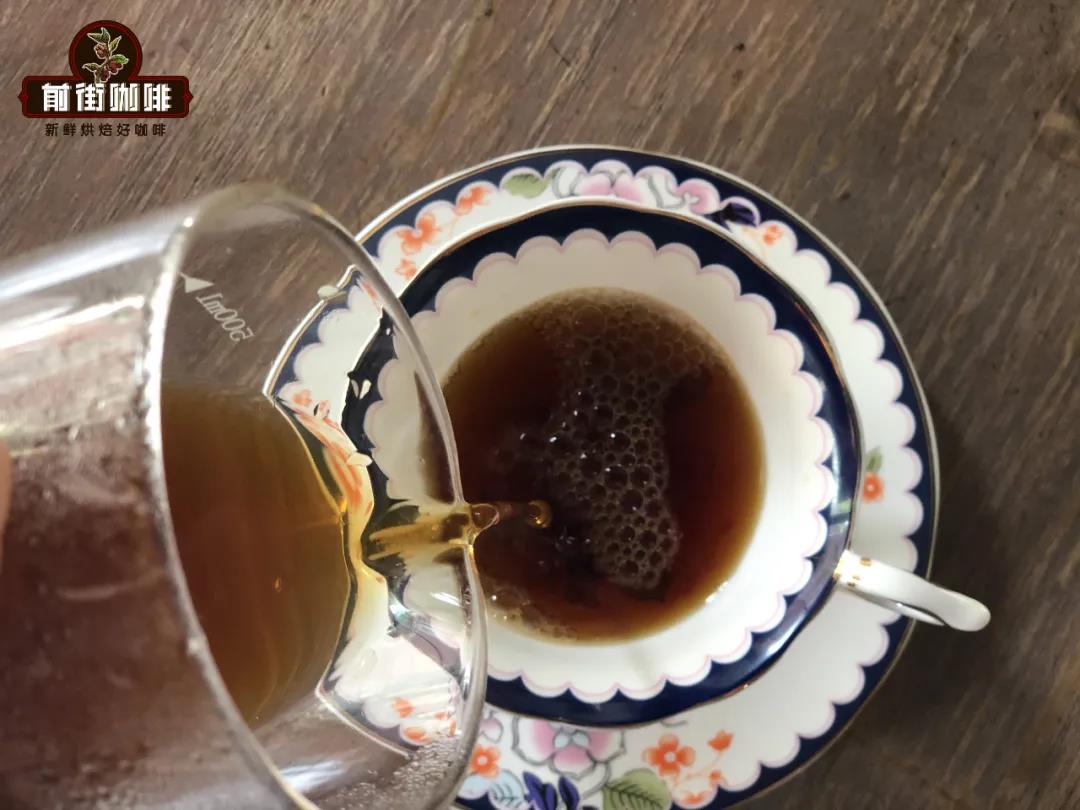The mystery of the variety of Brazilian coffee beans is Brazilian coffee beans a small seed?

Professional coffee knowledge exchange more coffee bean information please follow the coffee workshop (Wechat official account cafe_style)
Coffee originated in Ethiopia, was brought to the world by the colonists during the great voyage, and gradually became the most popular drink in the world. With Skyscanner, let's take a look at the main producing areas of coffee beans and the types of individual coffee.
Coffee belt
Coffee is produced in more than 60 countries in the world. Due to geological and climatic requirements, most of the coffee producing areas are located in the tropics and subtropics between the Tropic of Cancer and the Tropic of Cancer. The average temperature is above 20 ℃ and the elevation is about 1500 meters. This coffee growing area is called the "coffee belt" (Coffee Belt).
Coffee growing area
As shown in the picture above, coffee-growing areas are concentrated in North Africa, Central and South America, Southeast Asia and northern Oceania. There are about 40 species of coffee plants, but only Arabica, Robusta and Liberica can produce coffee beans with commercial value. These three species are called "three native species of coffee". Arabica has excellent flavor, but its yield is low and it is not resistant to diseases and insect pests. It has high requirements for climate, soil and other planting conditions. General boutique coffee is Arabica. The flavor of Robusta is not as good as that of Arabica, but it has high yield, fast growth, good resistance to diseases and insect pests, and the planting requirement is not as high as Arabica, so it is often used as commercial beans.
The Distribution of Arabica and Robusta in the World
Arabica coffee beans are mainly produced in South America (except parts of Argentina and Brazil), Central America, Africa (Kenya, Ethiopia and other places, mainly East African countries), Asia (including parts of Yemen, India and Papua New Guinea). The main producing countries of Robusta coffee beans are Indonesia, Vietnam and West African countries centered on C ô te d'Ivoire, Algeria and Angola.
Brazilian coffee beans are produced in Brazil. A wide variety of coffee, most of the coffee with moderate acidic characteristics, its sweet, bitter and alcohol taste is neutral, moderate concentration, smooth and special taste, mainly used for mixed coffee.
Most of the coffee harvesting in the world is selected by hand, so it is a labor-intensive and seasonally intensive process. Since there are both flowers and fruits on the same branch, the index finger and thumb of the collector are the best tools for collecting ripe berries. Scraping the fruit off a whole branch by hand or using an automated harvester can't tell ripe berries from green berries.
On the other hand, coffee farmers who produce low-grade coffee beans in Brazil like to use labor-saving methods to harvest beans, but in this way, because the quality is not pure, it reduces the flavor of coffee and lowers the grade of coffee. The way to pick coffee beans in some parts of Africa is to shake coffee trees, shake the fruit off the ground, and pick it up from the ground before the fruit is injured and rotten. Secondary coffee is produced in most parts of Brazil, where coffee is picked by plucking all the leaves, flowers, overheated and green fruits from the branches at a time, and it takes two years for such damaged coffee trees to return to normal.
South America-Brazil (BRAZIL)
Brazilian coffee beans famous representative coffee: Santos
Brazil is the world's largest coffee producer, with the first total output in the world, accounting for about 1 of the world's total output. Brazil is mainly produced in the central and southern provinces. Brazil is suitable for growing coffee areas, the terrain is relatively flat, coffee gardens are mostly less than 1200 meters above sea level, and there is no shade from big trees, because raw and ripe berries are harvested at the same time, it is not fine coffee. The quality of Brazilian coffee is average but less excellent, its bean quality is soft, and it is obviously not resistant to heat in the roasting process. Among the varieties, Santos is more famous, which is named after its export port Santos. Brazilian coffee beans are neutral and can be tasted alone (though a bit monotonous), or mixed with other kinds of coffee beans to form a comprehensive coffee, which is generally considered to be indispensable in blending.
In Brazil, the second largest producer is Robusta coffee. This kind of coffee is sold in the supermarket. Robusta coffee, sold under the name Cornelon, accounts for 15 per cent of total production. The old Bourbon coffee is grown on some estates in the Serrado district of the state of Milas Gerais in southeastern Brazil. These estates, such as CapinBlanco Manor and Vesta. Allegre Manor, the old variety of coffee grown in Bourbon, is also sold on the market. Although they come from the same area, these coffees have their own characteristics. Cappinblanco coffee is smoother than Vesta Allegre coffee, while Vesta Allegre coffee is strong and black, both of which have relatively low acidity, but, like all Brazilian coffees, they are most suitable for drinking when fresh, because the older they are, the stronger the acidity. These coffee growers have organized themselves into the Brazilian Special Coffee Association. Coffee overall impression flavor there are many kinds, a variety of flavors, but most of them are low-grade coffee, smooth taste recommended low degree of roasting to deep roasting, suitable for a variety of uses good grade. Brazil is the largest producer of coffee in the world. Output is the first and quality is stable. Is an Arabica species. Adopt the method of drying. The aroma and taste are moderate. There is almost no sour taste. Is the representative of neutral coffee. It can be said to be the most suitable variety for mixed coffee. Santos, especially Bourbon bour bon Santos (named after the French colonial island Bourbon bour bon. Bourbon is now known as R é union, where the coffee saplings that brought Para were planted). It is famous for its mellow, flawless and neutral taste. Santos can be cooked directly alone and is a good partner for Italian beans. The real bourbon Santos is the beans of the first few seasons of mocha coffee trees. Three or four years later, the characteristics of beans changed, and in the sixth year, it became Flat Bean Santos. Red Santos is sweet, Bourbon Santos is bitter, fresh Santos is sour, and Chen will weaken the sour taste. Recently, the "Guilma Cup" is also highly rated.
END
Important Notice :
前街咖啡 FrontStreet Coffee has moved to new addredd:
FrontStreet Coffee Address: 315,Donghua East Road,GuangZhou
Tel:020 38364473
- Prev

Yega Xuefei aricha coffee beans brewing and sharing Aricha coffee flavor and taste characteristics in 2018 production season
Professional coffee knowledge exchange more coffee bean information please follow Coffee Workshop (Wechat official account cafe_style) Yega Xuefi, a town of about 20, 000 people, adjacent to three small producing areas Wenago, Kochere and Gelena Abaya, because the flavor of the coffee produced is almost no different from that of Yejia Xuefei, so it is divided into Yejasuefei this area. Micro-farmers in high-quality producing areas
- Next

Brazilian coffee bean varieties main producing areas Brazilian sun treatment of bourbon coffee bean flavor hand-flavored suggestion
Professional coffee knowledge exchange more coffee bean information Please follow the coffee workshop (Wechat official account cafe_style) Brazil's coffee industry accounts for about 1/3 of the world's total output, is currently the world's largest coffee producer. Coffee plantations in Brazil cover a total area of about 27000 square kilometers, mainly in the southeastern states of Minas Gerais, Sao Paulo and
Related
- Detailed explanation of Jadeite planting Land in Panamanian Jadeite Manor introduction to the grading system of Jadeite competitive bidding, Red bid, Green bid and Rose Summer
- Story of Coffee planting in Brenka region of Costa Rica Stonehenge Manor anaerobic heavy honey treatment of flavor mouth
- What's on the barrel of Blue Mountain Coffee beans?
- Can American coffee also pull flowers? How to use hot American style to pull out a good-looking pattern?
- Can you make a cold extract with coffee beans? What is the right proportion for cold-extracted coffee formula?
- Indonesian PWN Gold Mandrine Coffee Origin Features Flavor How to Chong? Mandolin coffee is American.
- A brief introduction to the flavor characteristics of Brazilian yellow bourbon coffee beans
- What is the effect of different water quality on the flavor of cold-extracted coffee? What kind of water is best for brewing coffee?
- Why do you think of Rose Summer whenever you mention Panamanian coffee?
- Introduction to the characteristics of authentic blue mountain coffee bean producing areas? What is the CIB Coffee Authority in Jamaica?

